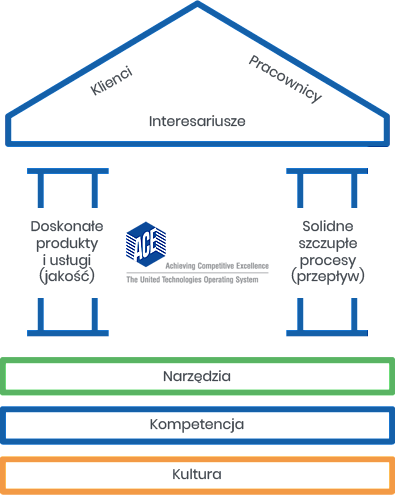Lean Management
 |
Lean Management
Lean Management is a concept for activities with the purpose of delivering to clients such products/services that they expect in a perfectly timely manner. Lean Management leads to:
At UTC, Lean Management is based on the ACE operating system. The ACE operating system consists of three basic elements: Culture, Competences, Tools. The ACE operating system is a way in which all the UTC employees perform their daily duties, using simple tools in order to improve and maximise the quality and the flow of values for the client. The ACE system includes 14 main tools arranged according to particular criteria in the certification protocol. These tools are integrated, innovative, novel, effective and can evolve depending on particular applications.
|
ACE™ TOOLS
|
Process Improvement and Loss (wastefulness) Elimination
|
 |
|
Problem Solving (DIVE Process)
|
 |
|
Decision Making Passport Process |
 |
In practice, after implementation of ACE tools at workstations on one of the production lines, the operators emphasised that there were no longer any redundant tools at the workstations, there was no need to go and get tools, there was also no room for error or confusion between the parts. Apart from these improvements, line visualisations and 6s have been improved. The line’s organisation has been improved – and although the area of the division has been decreased, this space has been put to better use. In addition, the trolleys are continuously being replaced with ones meeting the requirements of ergonomics, with sliding drawers. There are also plans to replace the overhead travelling cranes with manipulators in order to facilitate and speed up work.
The implemented solutions can be recognised as the best in their class, which is confirmed by the fact that, after
a benchmarking visit, a Japanese company asked whether it could use the line set-up idea. It fills us with pride all the more, as the ACE and lean concepts have their origins in Japan – the whole concept started at a Japanese company, Toyota.